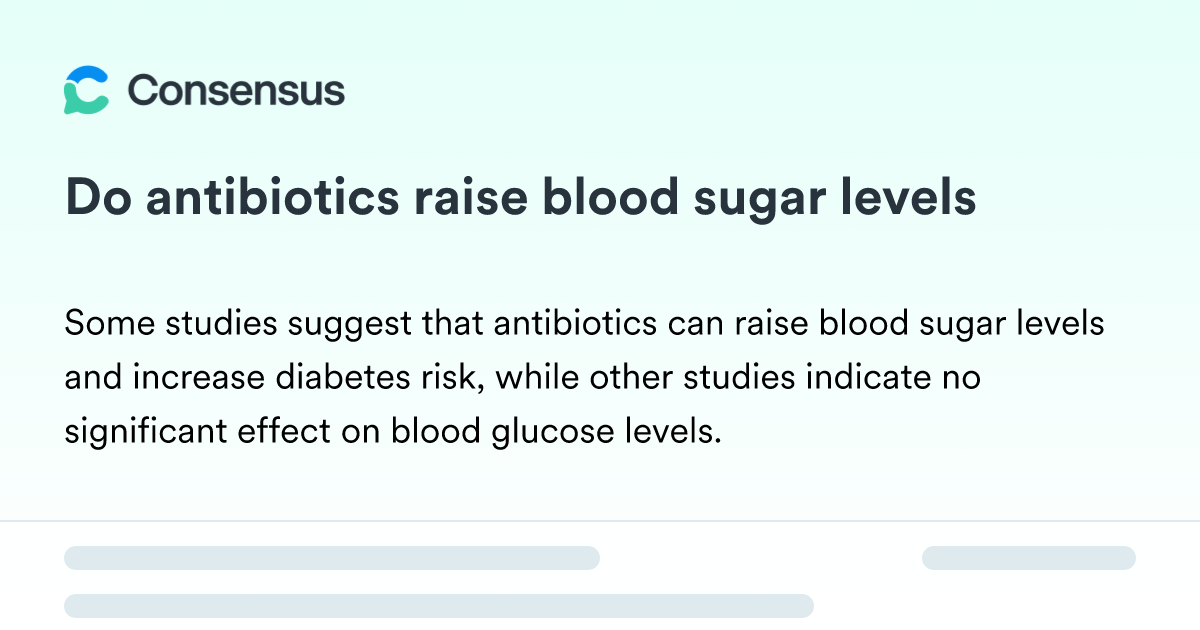Certain antibiotics can indeed raise blood sugar levels (hyperglycemia), although this effect is not universal and varies depending on the specific drug, dosage, duration of treatment, and individual patient factors.

Antibiotics Associated with Elevated Blood Sugar
- Fluoroquinolones: This class of antibiotics (e.g., ciprofloxacin, levofloxacin, moxifloxacin) is most prominently linked to dysglycemia, meaning they can cause both significant increases and decreases in blood sugar. However, hyperglycemia, sometimes severe enough to require hospitalization, has been reported. The risk is often higher in older adults and individuals with pre-existing diabetes. The mechanism may involve alterations in insulin secretion from pancreatic beta cells and potentially insulin resistance.
- Rifampin: This antibiotic, primarily used for tuberculosis and other infections, can accelerate the metabolism of certain oral antidiabetic medications (like sulfonylureas or metformin) by inducing liver enzymes (cytochrome P450 system). This reduces the effectiveness of these diabetes drugs, potentially leading to secondary hyperglycemia.
- Some Macrolides: There is some evidence suggesting that certain macrolide antibiotics (e.g., clarithromycin) might modestly increase blood sugar in susceptible individuals. The mechanisms are not fully clear but could involve effects on glucose metabolism or insulin secretion/sensitivity.
- Sulfonamides (less commonly for hyperglycemia): While more commonly associated with lowering blood sugar (hypoglycemia), particularly sulfamethoxazole (often combined with trimethoprim), there are rare reports of hyperglycemia. This is not their typical effect on glucose.
- Dapsone: Similar to sulfonamides, dapsone is more often linked with hypoglycemia, but dysglycemia, including hyperglycemia, has been occasionally noted.
It’s also important to consider that severe infections themselves can cause a stress response in the body, leading to temporary increases in blood sugar levels, independent of the antibiotic used.
Key Considerations and Risk Factors
- Pre-existing Diabetes: Individuals with type 1 or type 2 diabetes are at a significantly higher risk of experiencing antibiotic-induced hyperglycemia.
- Renal Impairment: Reduced kidney function can affect the clearance of some antibiotics and their metabolites, potentially increasing the risk of adverse effects, including blood sugar disturbances.
- Concomitant Medications: Interactions with other medications, especially corticosteroids (which strongly raise blood sugar) or diabetes medications, can profoundly influence blood glucose levels.
- Age: Elderly patients may be more susceptible to drug-induced blood sugar changes.
Many other commonly used antibiotics, such as most penicillins (e.g., amoxicillin) and cephalosporins, generally have a low risk of causing significant hyperglycemia in most individuals. However, if you have diabetes or concerns about your blood sugar, it is crucial to discuss any new antibiotic prescription with your healthcare provider. They may recommend more frequent blood glucose monitoring during the course of treatment, especially if an antibiotic with a known risk of affecting blood sugar is necessary.










